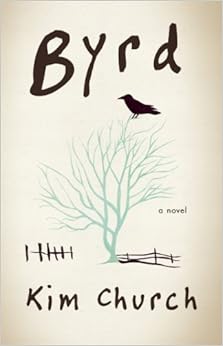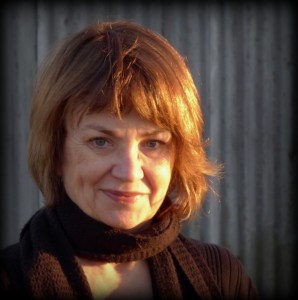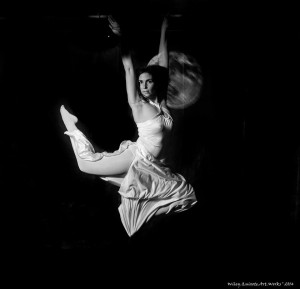Mary Akers: Kim, I loved your short piece “Breezeway” in this issue. I feel like I read it and accepted it very quickly (if I didn’t, please let me keep my fantasy of the good, timely editor). I love the feeling of flying and freedom that I get from reading it, even though it’s a story about an unhappy marriage, those final lines feel like redemption. How do you feel about “redemption” in stories? Do you like it in the work of others? Do you strive for it in your own work?
Kim Church: Mary, you did accept the story quickly—it was a breeze! About redemption: When I was young I romanticized darkness. I lived on a steady diet of writers like Kosiński and Kafka. As I’ve gotten older, I’ve become more mothlike. I want a flame, a flicker of hope in whatever I read or write, or at least a little levity. I’m done with unrelenting bleakness. The last unrelentingly bleak book I read, I threw out the window. (Okay, not really, but I wanted to.)
MA: “Mothlike.” That’s a great description. The picture that accompanies “Breezeway” helps me have that flying feeling about the piece. I’m always fascinated by the way written work and images can complement and influence the viewers’/readers’ perception of each form—a conversation, or inter-genre dialogue, if you will, and the person who chooses the image starts that conversation. In this case, that person was me. So…no pressure, but what did you think of the illustration? Did it have any special meaning for you that I couldn’t have known? (I’m amazed by how often that turns out to be the case.)
KC: My reaction was, wheeeee! The dancer’s leap illustrates the sense of weightlessness and release a child feels on a bicycle—a feeling the wife in the story remembers from her childhood. At the same time, the dancer’s discipline is evident in the photograph. Here’s a professional executing a difficult move she’s practiced and prepared for—much as the wife is preparing for her own difficult letting-go.
MA: In addition to this great SOS piece in r.kv.r.y., I’ve just had the pleasure of finishing your wonderful novel BYRD. (For some reason, I like typing the title in all caps. Or… maybe I’m just shouting the title because I loved BYRD so much!) This book has a lot of epistolary elements, but I wouldn’t call it an epistolary novel. Still, the biggest plot twist of all comes from a letter that only gets to its intended reader in a very roundabout and tragic way. Was that particular ending always a part of the book? If not, how did it evolve throughout the process of writing and editing?
KC: I’m thrilled you liked the book, Mary. The plot twist you’re referring to wasn’t in the original draft. Originally I wrote the novel as a first-person narrative from Addie’s—the birth mother’s—point of view, since the book is largely her story. When I began to revise, I realized that Addie doesn’t know enough to tell her whole story. She makes decisions for reasons she doesn’t understand, and they affect others in ways she can’t see. To get at those parts of the story, I needed different points of view. So I started over, adding new characters. And as new characters often do, they took the story in a whole new direction. The plot twist you mention was part of that new direction. It surprised me as I was writing but felt inevitable once I’d written it.

MA: I like it when characters surprise me. Makes everything just a little better–a little more fraught. And speaking of letters, that last one from the adoptive parents. Whoa. What a killer final line. Letters always seem voyeuristic to me—in a good way. I’m reading someone else’s mail! I think that’s why I like them. Also, they are telling for what they don’t say, like in Lee Smith’s marvelous book The Christmas Letters. What is it about letters that drew you to them as an aid in telling this story?
KC: I wanted the book to have the intimacy of a confession, which is why I initially wrote it in first person. I didn’t want to lose that intimacy when I changed the structure of the book. Addie’s letters to her son were a way of keeping her voice. There are other letters too, from the adoptive mother and others; I thought of these as little points of contact, or almost-contact, between characters who, though connected by circumstances, were unable to connect in person.
MA: You succeeded! The whole thing feels very intimate. Like Addie and Roland’s friendship, which is interesting and wonderful. And complex. You manage to cover many years of Addie’s life and their changing relationship. What challenges did you encounter in writing a story that spans many years?
KC: The book spans 45 years in under 250 pages. In my notes and early drafts, I tried to connect all the dots, to account for everything that happened with all the characters. As author, I needed to know. The trick (isn’t this always the trick?) was figuring out how much to include in the book and how much to leave out. I did a lot of compressing and distilling, and when my agent submitted the manuscript to Dzanc it was pretty lean. But it still needed some shaping. I was blessed with a brilliant editor, Guy Intoci. He not only helped me trim and arrange, but he also showed me where the book was too elliptical, where it needed more. More Addie, more letters.
MA: Yes, how much to include of all the hard work we do is always the trick.
BYRD has a great sense of place. Which makes me curious: do you consider yourself a southern writer? And what do you think the term “southern writer” implies?
KC: I don’t label myself, but I’ve lived all my life in the South, and that’s bound to affect my writing. I try to create a strong sense of place in my work, which is largely set in the South. And I write a lot about family, a perennial Southern theme, even though my approach is unconventional.
MA: I thought one of the themes was about following your dreams…or maybe even learning to recognize your dreams. Would you care to comment on that?
KC: I think “learning to recognize your dreams” comes close. I might add, “learning to accept that you’re worthy of your dreams.”
MA: Yes! Definitely a theme and a recurring struggle for many of us. I also felt like another theme was exploring identity and the idea of how we know WHO we are. Also how we are shaped by our choices and the choices of others. Addie and Byrd are most directly affected by Addie’s choice, but Roland is, too—tangentially at first, and then hugely and directly by the end of the book. Were you consciously thinking about choices and their consequences when you were writing?
KC: Absolutely. That’s what motivated me to write the book. Years ago, a friend told me that his 30-some-year-old girlfriend had given up their baby for adoption. I didn’t know the girlfriend, but I couldn’t stop thinking about her—a grown, capable woman choosing to surrender her child, then having to live with the knowledge that he was in the world somewhere, a stranger. How would that feel? The idea haunted me. I felt a deep, inexplicable empathy for this birth mother. I tried to find a character like her in a book. There wasn’t one. The only stories I could find were about young unwed mothers whose babies had been taken from them or women who had otherwise been victimized—compelling stories, but not what I was after. I wanted a book about a woman who makes and has to live with her own hard choices. So I wrote one.
MA: Wow. Fascinating. I love how the things that initially shock us can turn into art. Speaking of art, I love the cover of the book. Could you talk a bit about the process of cover design and selection? Have readers given you any interesting feedback regarding the cover?
KC: Thanks! I love the cover, too, and it’s had great response from readers. The Ackland Museum Store in Chapel Hill is carrying the book—partly, I’m sure, because of the cover. One reviewer, Trina Hayes, wrote: “I rarely comment on book covers but this one is special. The striking title font and the solid bird perched on a leafless tree pull the reader into a story that shows how a child can rise like a bird and impact those left behind. [The designers] deserve an award for capturing the book’s essence.” Steven Seighman of Dzanc designed the cover and incorporated art by Ilsa Brink, who also designed my website. I agree with the reviewer—they both deserve an award.
MA: Wonderful. I agree. And thank you so much for speaking with me today, Kim. I really enjoyed it.



Pingback: Breezeway | Rkvry Quarterly Literary Journal